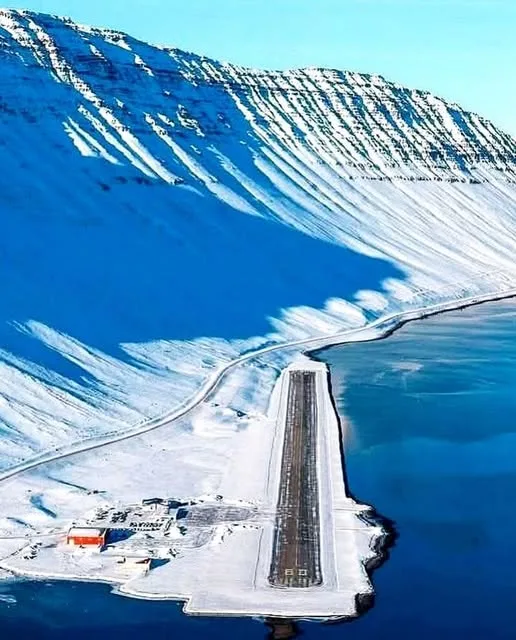Ísafjörður Airport (IFJ) in the remote Westfjords of Iceland is far more than a mere waypoint on the aviation map—it’s a legendary challenge whispered among pilots, a thrilling spectacle for onlookers, and a critical lifeline for a stunning yet isolated region. Far removed from the standard long, straight approaches over flat terrain, landing at Ísafjörður is an indelible experience, blending awe, excitement, and perhaps a hint of nervousness for those fortunate enough to arrive or depart from its extraordinary runway.

Tucked deep within the embrace of towering, sheer cliffs that plunge dramatically into the icy waters of a narrow fjord, the airport’s location demands a landing procedure unlike almost any other globally. There’s no margin for error, no gentle glide from a safe altitude onto a sprawling tarmac. Instead, pilots engage in a captivating dance with the landscape, showcasing skill and precision against a backdrop of natural grandeur.
The Famed 180-Degree Turn
The hallmark of Ísafjörður is the heart-stopping 180-degree turn required for landing on Runway 08, oriented northeast. Picture this: the aircraft approaches from the southwest, soaring deep into the fjord with imposing mountains looming on either side, their rugged faces closing in. Just as it seems the plane might veer out to sea, pilots execute a sharp, full turn at low altitude—often below 500 feet—aligning with the short, narrow runway that appears to hover above the fjord’s surface. This isn’t a casual banking maneuver; it’s a calculated, high-stakes pivot requiring absolute focus, with cliffs serving as both navigational aids and a stark reminder of the tight margins. For passengers, the view through the windows during this turn is both exhilarating and slightly daunting, revealing the fjord’s dramatic sweep and the runway’s sudden emergence in a breathtaking panorama.
A Lifeline Carved by Necessity
While the approach feels like a scene from an adventure film, Ísafjörður Airport’s existence is a practical response to the region’s isolation. The Westfjords, with their jagged coastline, deep fjords, and treacherous winter roads, pose significant travel challenges, often cutting off communities during snowstorms. Established in 1948, the airport connects this remote peninsula to Reykjavík and other parts of Iceland, serving around 20,000 passengers annually with small aircraft like the De Havilland Canada Dash 8. For residents, businesses reliant on fishing and tourism, and the growing number of visitors drawn to the area’s wild beauty, this air link is indispensable, turning a logistical necessity into a cultural asset.
More Than Just a Challenging Landing
Beyond the iconic approach, Ísafjörður Airport embodies human ingenuity adapting to nature’s majesty. Its single runway, stretching 1,400 meters (4,593 feet) into the fjord, faces constant exposure to harsh weather, including snow, ice, and fierce winds. The modest terminal, just 1.5 kilometers (0.9 miles) from Ísafjörður town, is a functional hub reflecting the community’s scale, offering a warm welcome to travelers. The pilots who master these skies are a rare breed, combining expertise and calm under pressure to keep this corner of Iceland connected—true unsung heroes of the region.
A Must-See (and Maybe Fly-Into) Destination
As of 08:56 PM +07 on Sunday, August 17, 2025, Ísafjörður Airport remains a must-visit for aviation enthusiasts, scenery seekers, and those curious about remote life. Watching a plane execute that 180-degree turn against the fjord’s majestic cliffs is unforgettable. Keep your camera ready to capture the moment, and perhaps offer a silent nod of gratitude to the skilled pilots who make it happen. If you’re interested, I can search for recent pilot stories or weather updates to enrich your understanding of this remarkable site!


